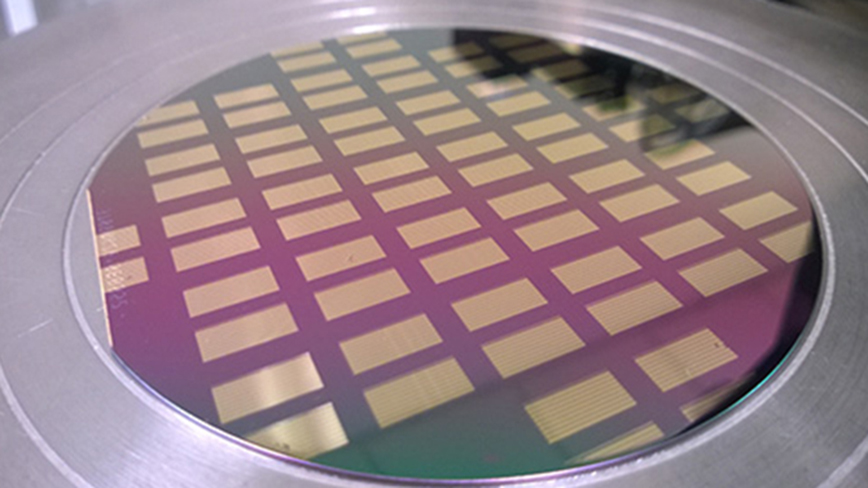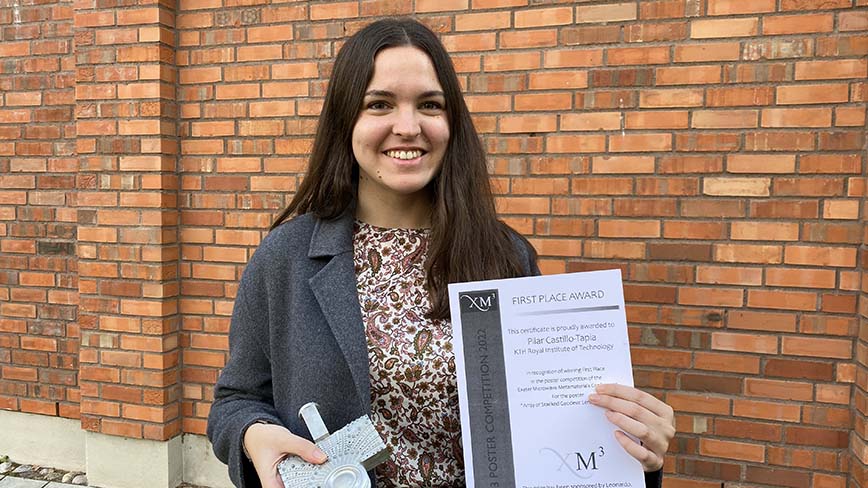They won in competition with NASA

We have talked to Oskar Zetterström and Pilar Castillo-Tapia, authors of the winning paper at the EuCAP 2022, Europe’s flagship conference on antennas and propagation. Their paper had tough competition, with, for example, a paper co-authored by TU Delft and NASA-JPL/Caltech amongst its competitors.
Can you tell us a bit about the paper?
"This paper investigates how electromagnetic waves propagate through periodic structures with a particular type of symmetry called glide symmetry, a research topic that has become very popular in recent years and that our group at KTH is working extensively on."
The specific contribution of this paper was that we managed to demonstrate that glide-symmetric structures have attractive properties for the design of antennas. Most importantly, we showed that glide-symmetric structures could provide much wider bandwidth and more robust and cost-effective manufacturing than non-glide-symmetric structures."
"These properties are desired in future communication systems that require cost-effective antennas with wide bandwidths to provide a high data rate to many users. We then used the studied structure to implement and construct two lens antennas. This type of antenna finds applications in the emerging 5G and 6G mobile and satellite communication systems."
What do you think set your paper apart from the competition and made it the best paper?
"The competition was challenging this year with contributions from top universities and institutions. For instance, TU Delft and NASA had a joint work among the five finalists. We believe that the thing that set us apart from their and the other finalists' works was that we had a good mixture of theory and practice. We demonstrated and explained some fundamental properties of glide-symmetric structures and found an application where these properties are advantageous."
What are you working on at the moment?
"The topic of our research is lens antennas for future communication systems. We are currently working on two different projects: one in collaboration with ESA for satellite communication and one in partnership with Ericsson for 5G and 6G mobile communication. We develop new lens antenna concepts and demonstrate their viability for these applications in these projects. We will finish our PhD studies in 2024 and 2025."
Contact
Related news

Fast communication with spintronics is possible, models show
One step closer to better and faster communication in 5G and 6G has been taken. Ericsson and KTH will now evaluate the technology for two years, and the hope is to get closer to a prototype that can b...
Read the articleJohan designs next-generation mobile networks
The former student's most valuable lesson from KTH, his biggest fear as a student, and most importantly; what it’s like being an antenna engineer.
Read the article
Awarded for best entry
Future communication systems depend on antennas that are both directional and steerable to compensate for path loss. A boost in this work is done by doctoral student Pilar Castillo Tapia winner of the...
Read the article